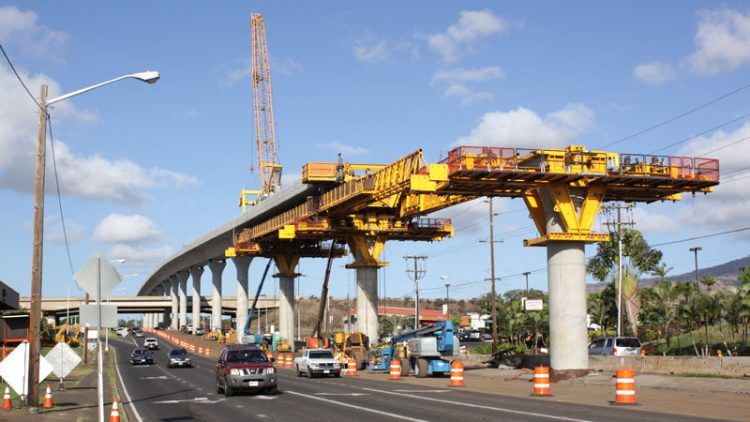In his latest blog, Robert Poole, director of transportation policy at the independent think-tank the Reason Foundation, examines how disruptions to the transportation industry – such as electric vehicles, autonomous vehicles and new types of mobility – can be quantified.
Last fall I gave an invited transportation presentation to a private foundation that is looking into demographic, behavioral, and technological changes likely in coming decades. My talk discussed how changes such as the transition from petroleum-fueled to alternative forms of propulsion, the emergence of various levels of vehicle automation, and the growth of Mobility as a Service (MaaS) are making long-range transportation planning far more difficult than it has been in recent decades.
The toll sector of transportation arguably has the most at stake in predicting what impacts will happen when. Last month, two sessions at the TEAM-Florida annual meeting in Orlando presented early efforts by traffic and revenue forecasters Aexom and CDM Smith to quantify these uncertainties.
Bill Nelson and Josiah Banet of AECOM explained their approach of running traffic forecasting models using a range of values for four different variables:
- Penetration rates of electric vehicles (EVs) and autonomous vehicles (AVs) between now and 2050;
- Extent of trip generation via new vehicle types, by demographic and geographic segments;
- Potential travel-time savings generated by AVs, by type of highway; and,
- Headway reductions due to connected vehicles (CVs).
 From a number of runs, with a range of numbers for each of these, they suggested that by 2050 reduced headways may deliver increased vehicle throughput—a de-facto increase in highway capacity, other things equal, of 5 to 12 percent. But since they also expect demand for toll road use to increase by 2 percent per year, the throughput would probably only defer needed widening of those toll roads by a decade or so. In response to a question, Nelson suggested that these developments would have a somewhat negative impact on managed lanes (express toll lanes), since somewhat less congestion in regular lanes would likely reduce demand for the managed lanes (MLs), reducing prices and revenue. He suggested this might lead to changes in pricing policy, and—with automation leading to more-precise control of vehicle movements—a possible introduction of trucks into MLs to cope with what might otherwise be revenue shortfalls.
From a number of runs, with a range of numbers for each of these, they suggested that by 2050 reduced headways may deliver increased vehicle throughput—a de-facto increase in highway capacity, other things equal, of 5 to 12 percent. But since they also expect demand for toll road use to increase by 2 percent per year, the throughput would probably only defer needed widening of those toll roads by a decade or so. In response to a question, Nelson suggested that these developments would have a somewhat negative impact on managed lanes (express toll lanes), since somewhat less congestion in regular lanes would likely reduce demand for the managed lanes (MLs), reducing prices and revenue. He suggested this might lead to changes in pricing policy, and—with automation leading to more-precise control of vehicle movements—a possible introduction of trucks into MLs to cope with what might otherwise be revenue shortfalls.
In a separate presentation, Ed Regan of CDM Smith outlined this company’s scenario-testing approach. In running scenarios through 2060, they are testing five scenarios for urban mobility with various peak-period values for:
- Mode share in conventional transit;
- Mode share of driving in a personally owned conventional vehicle;
- Mode share of using an owned AV;
- Mode share of MaaS; and
- Fraction of MaaS that is shared use.
Each of the five scenarios in the presentation had various combinations of these five factors, and were used to project daily VMT from 2018 through 2060. The baseline Scenario A (more or less today’s situation, with none of these innovations) projects VMT in 2060 to be 87 percent more than in 2018. Scenario B, with mostly privately owned conventional and autonomous vehicles and “low” penetration of MaaS, shows total VMT in 2060 as 140 percent higher than in 2018. Scenario C posits MaaS reaching 65 percent mode share, though with mostly non-shared trips, yielding 120 percent growth in VMT by 2060. Scenario D posits a significant fraction of MaaS as shared trips, yielding 2060 VMT that is only 76 percent greater than in 2018. The final Scenario E, with a large majority of MaaS as shared rides led to 2060 VMT that is just 47 percent greater than in 2018.
Another interesting Regan slide showed a graph with potential time periods for the transitions to EVs, Level 4 AVs, Level 5 AVs, and MaaS with and without a driver. For example, with new EV sales ramping up starting in about 2024, virtually the entire fleet could be replaced by 2050. The time frames for large-scale use of Level 4 and Level 5 AVs did not overlap at all, with significant usage of Level 5 AVs not appearing until 2040 and increasing thereafter. And MaaS with no driver was shown beginning in the early 2030s and increasing thereafter.
While my own prognostications are somewhat more conservative, it’s encouraging to see these topics being explored via scenario testing. Both TEAM-FL sessions acknowledged that the big impacts are decades away, so “why does it matter to tolling today?” Presenters pointed out that most toll facilities are financed by long-term (for example, 30 years or longer) toll revenue bonds, so the out-years of projected revenue could well be altered by these disruptive changes in mobility. It’s too early for bond rating agencies to be making decisions based on these initial efforts, but it’s encouraging that traffic and revenue forecasts are starting to grapple with quantifying these long-term impacts.
Subscribe to the Reason Foundation email newsletter and read back issues here.





